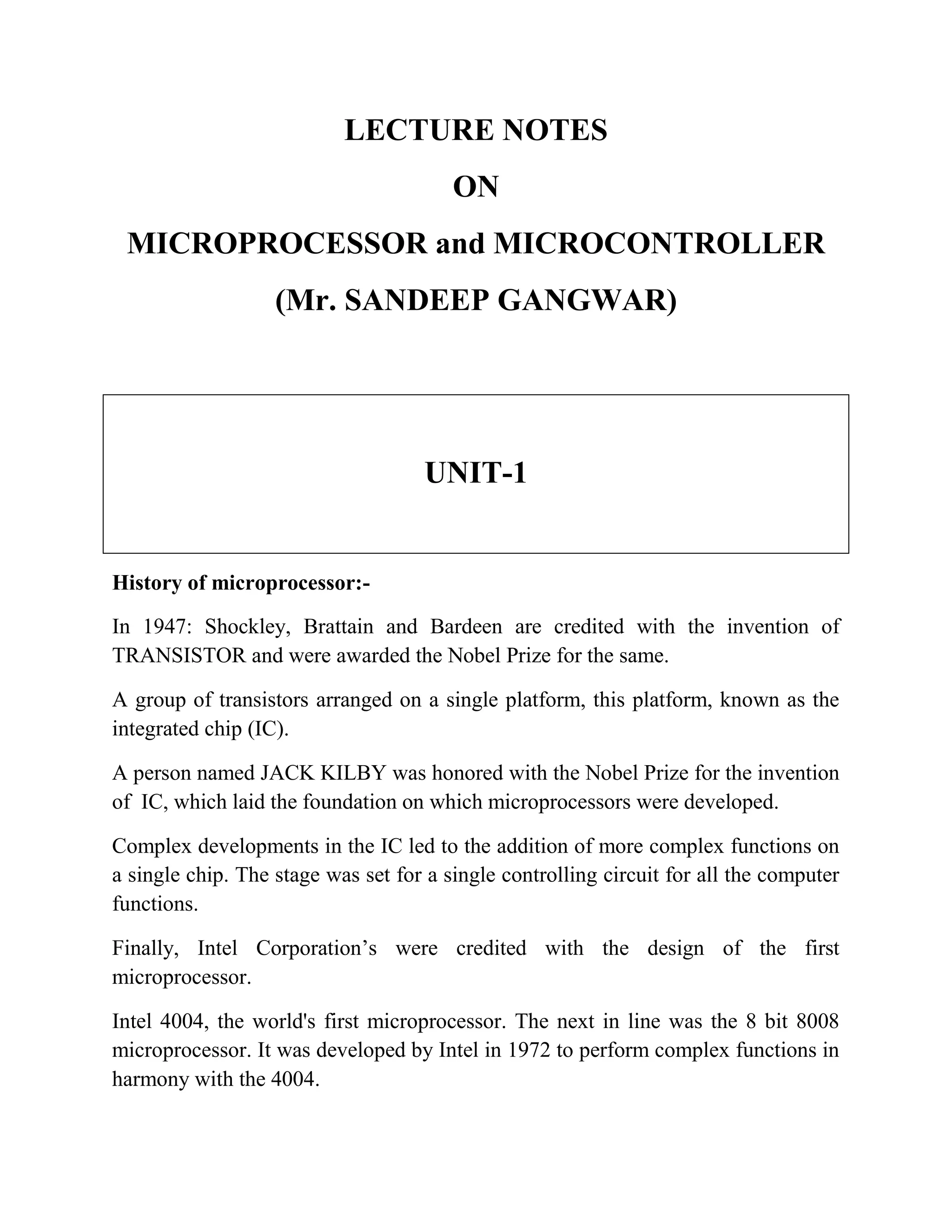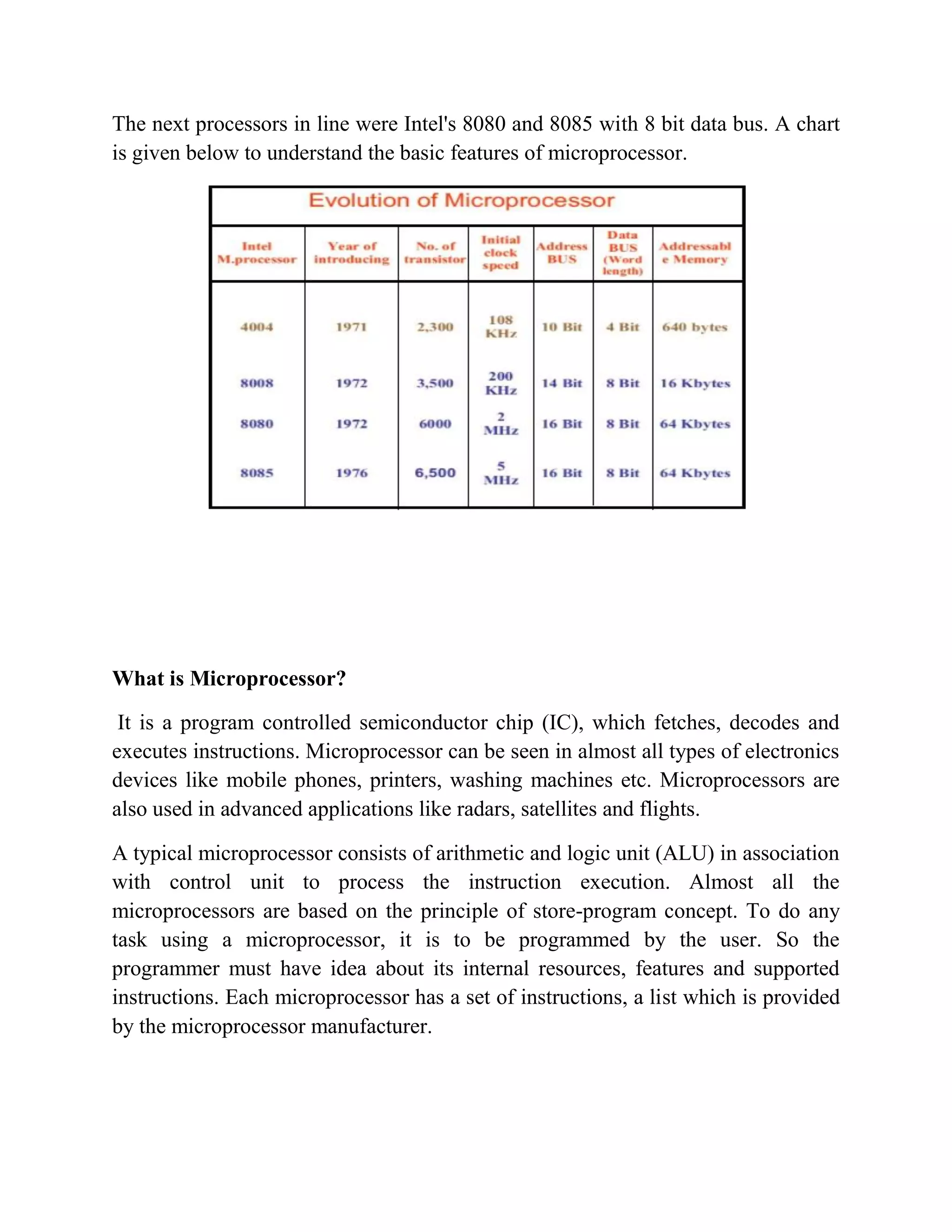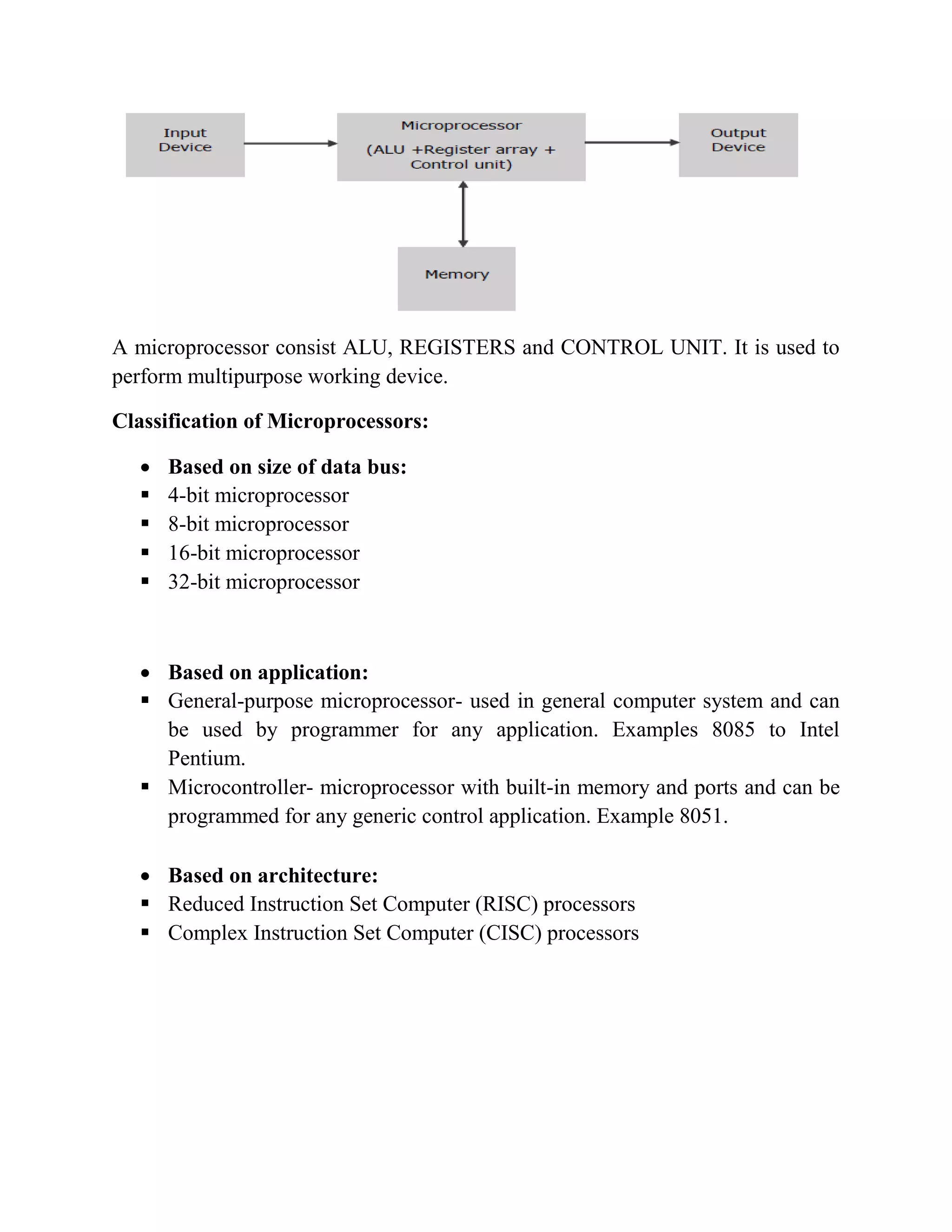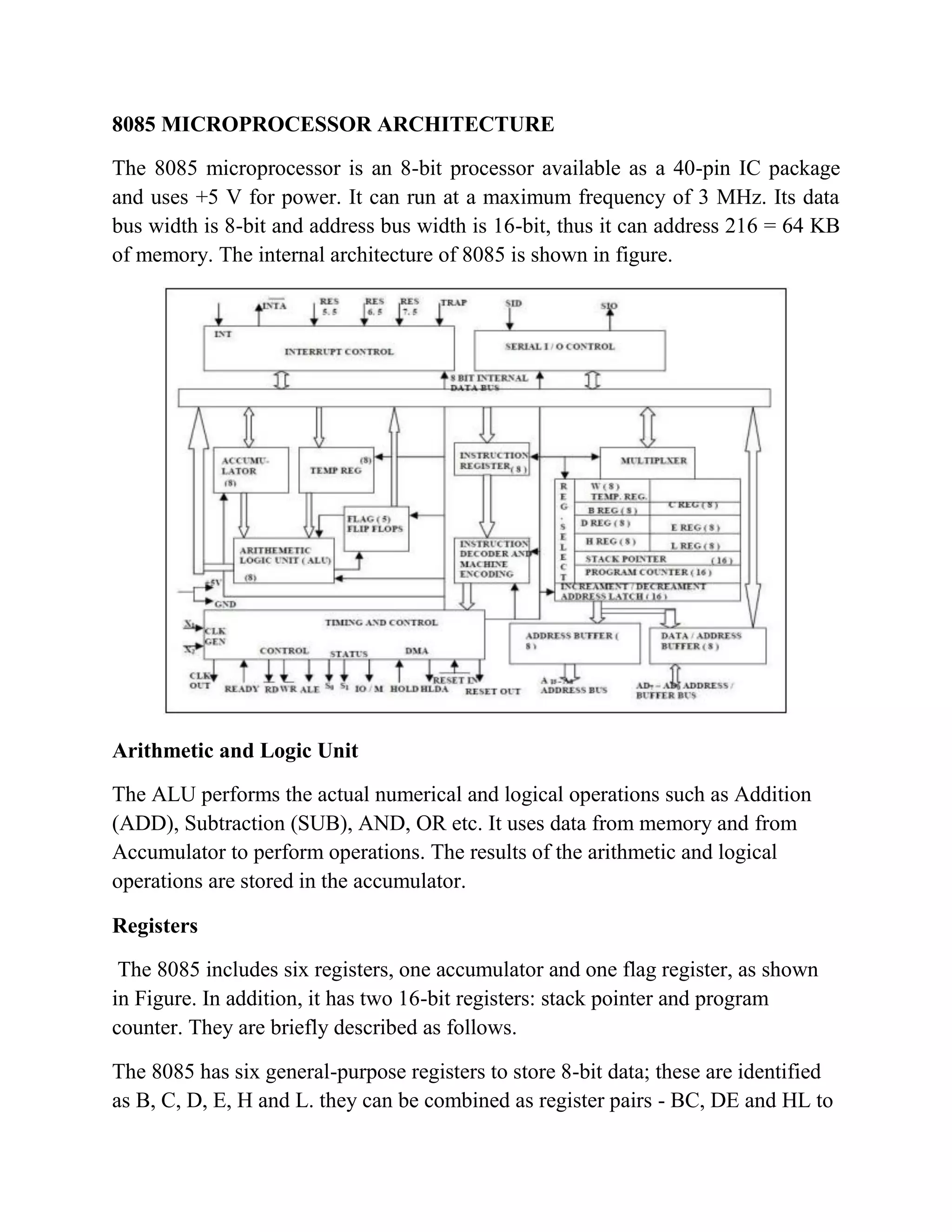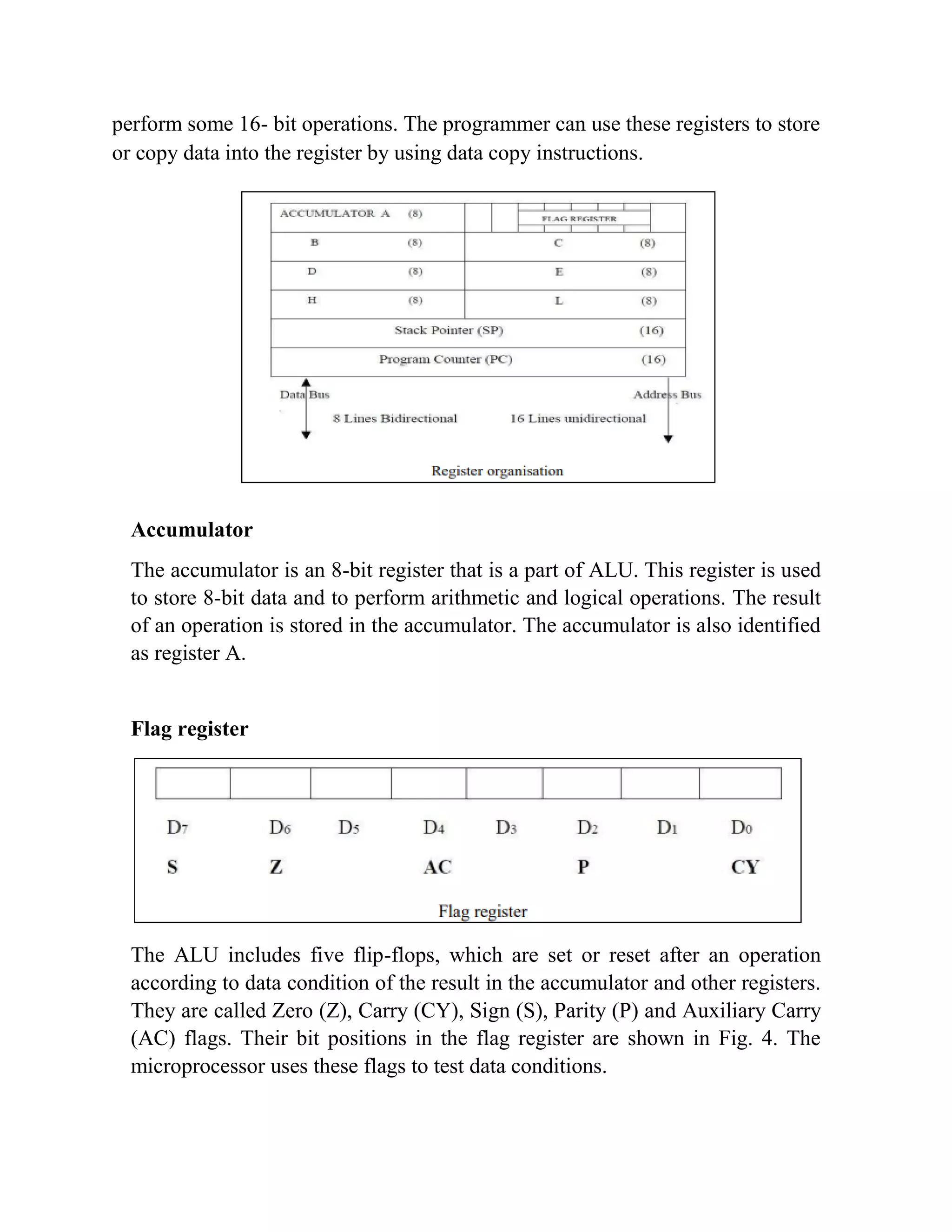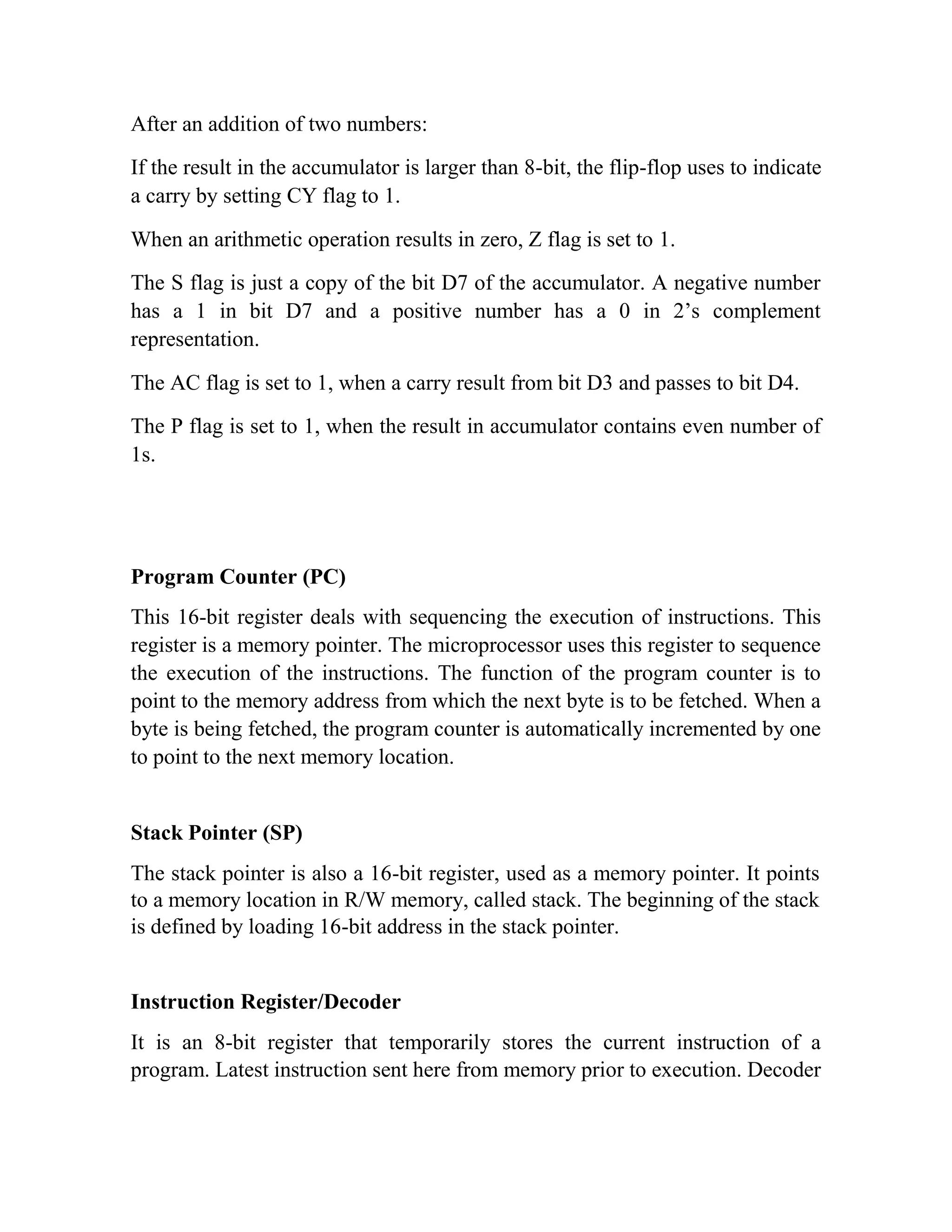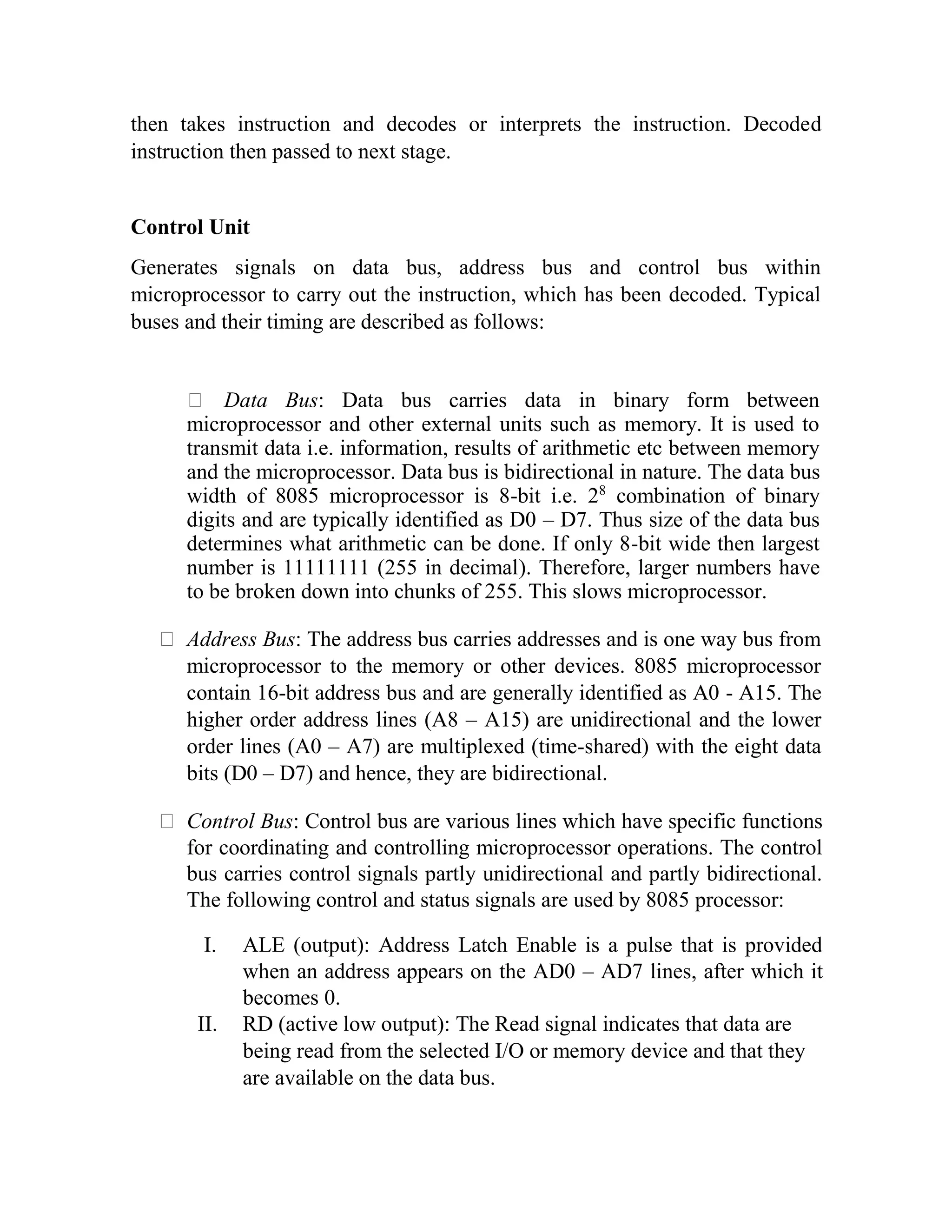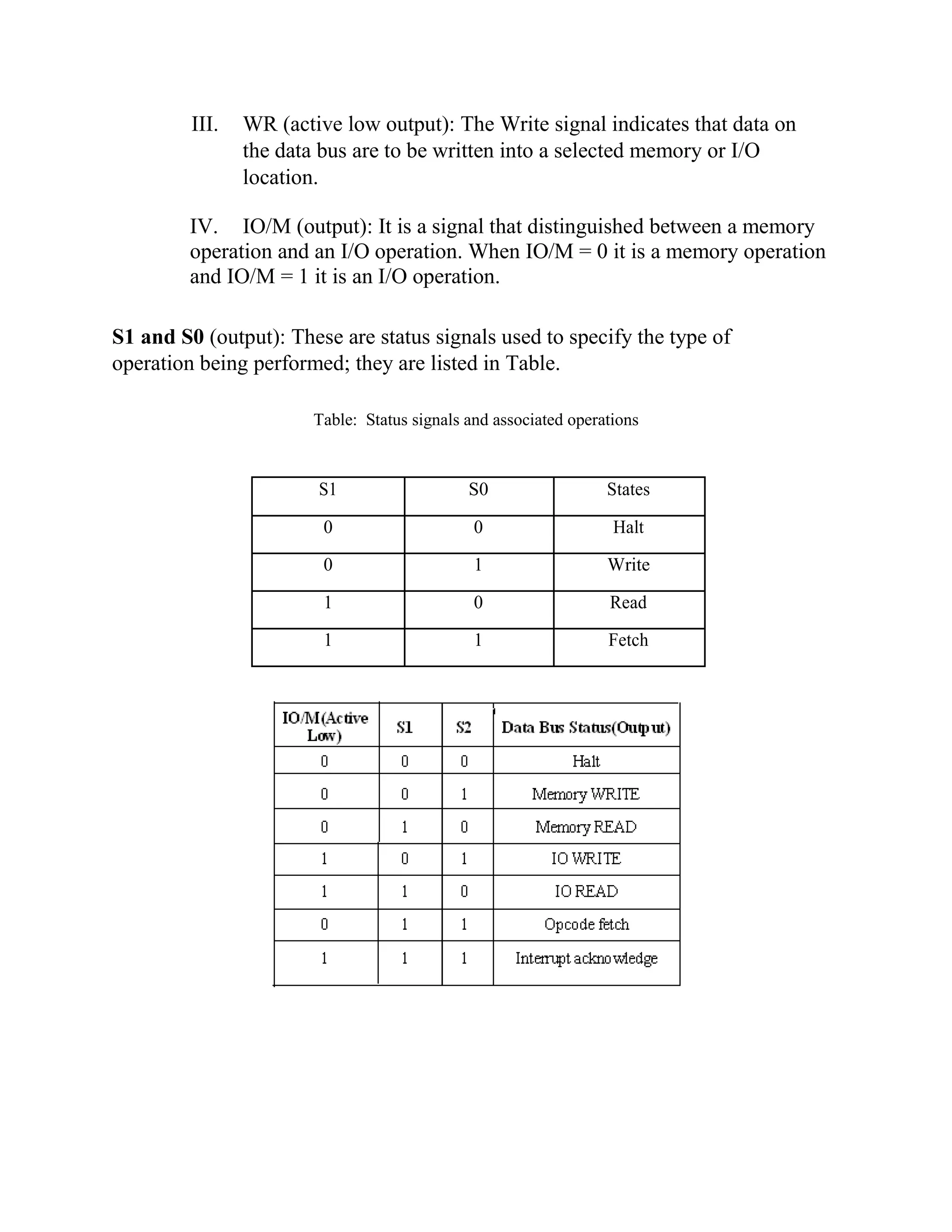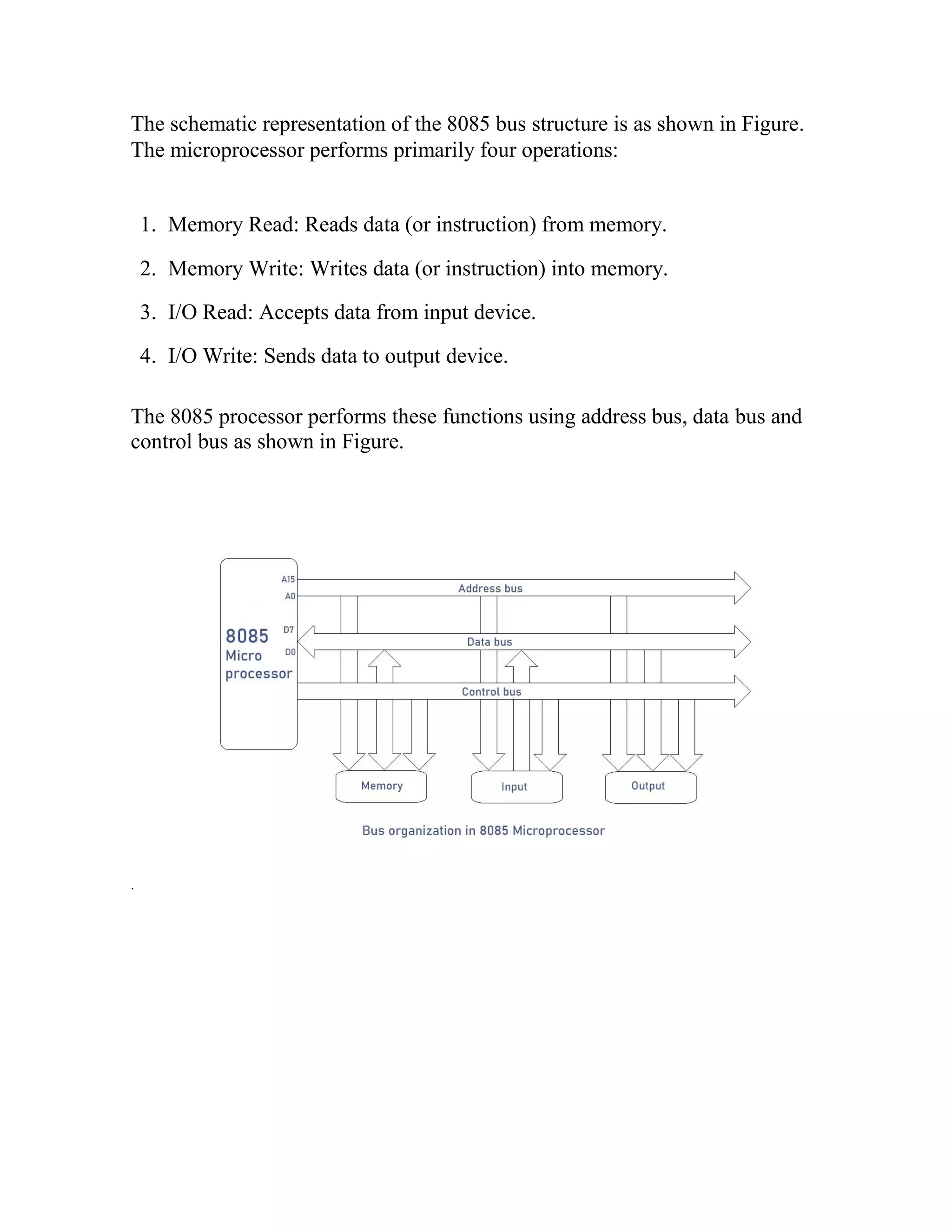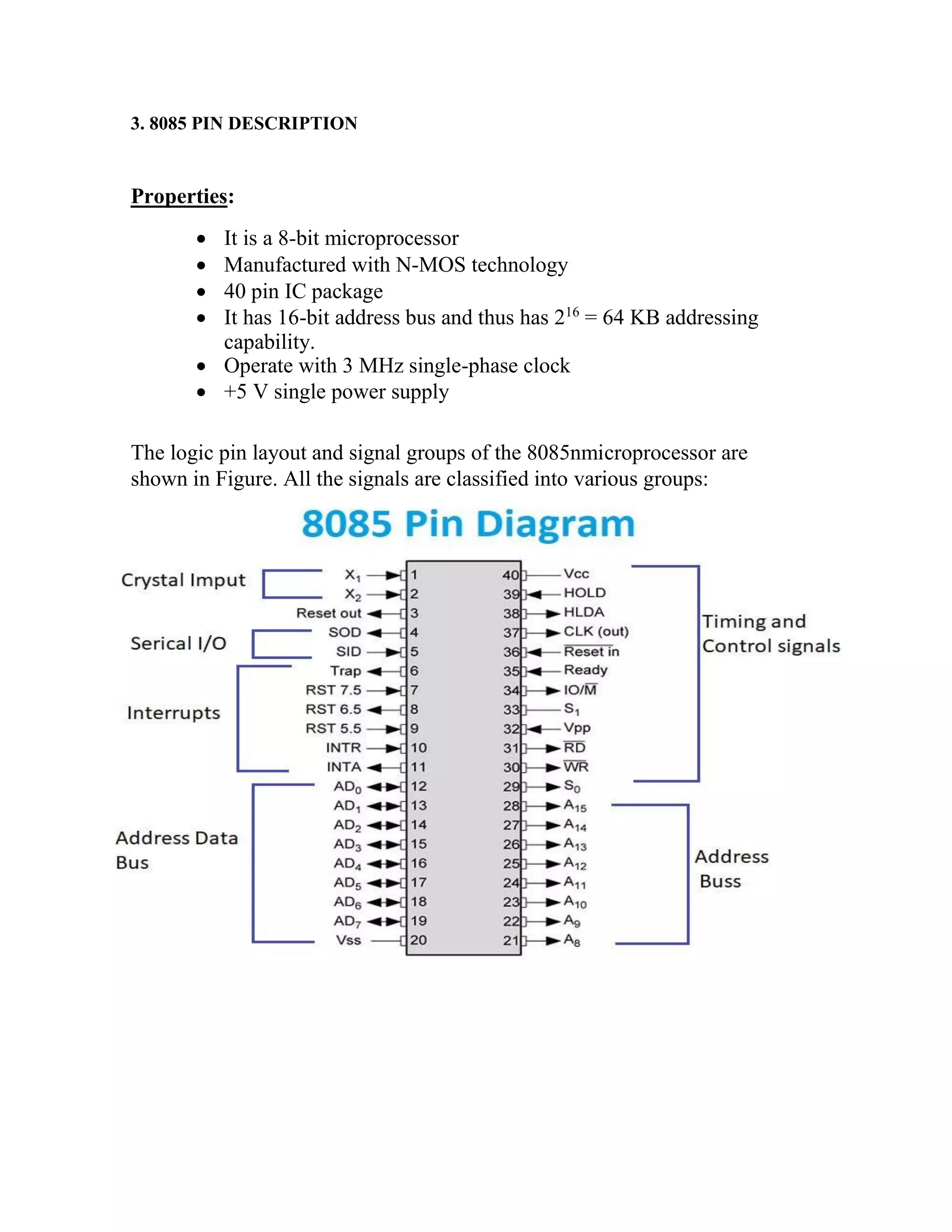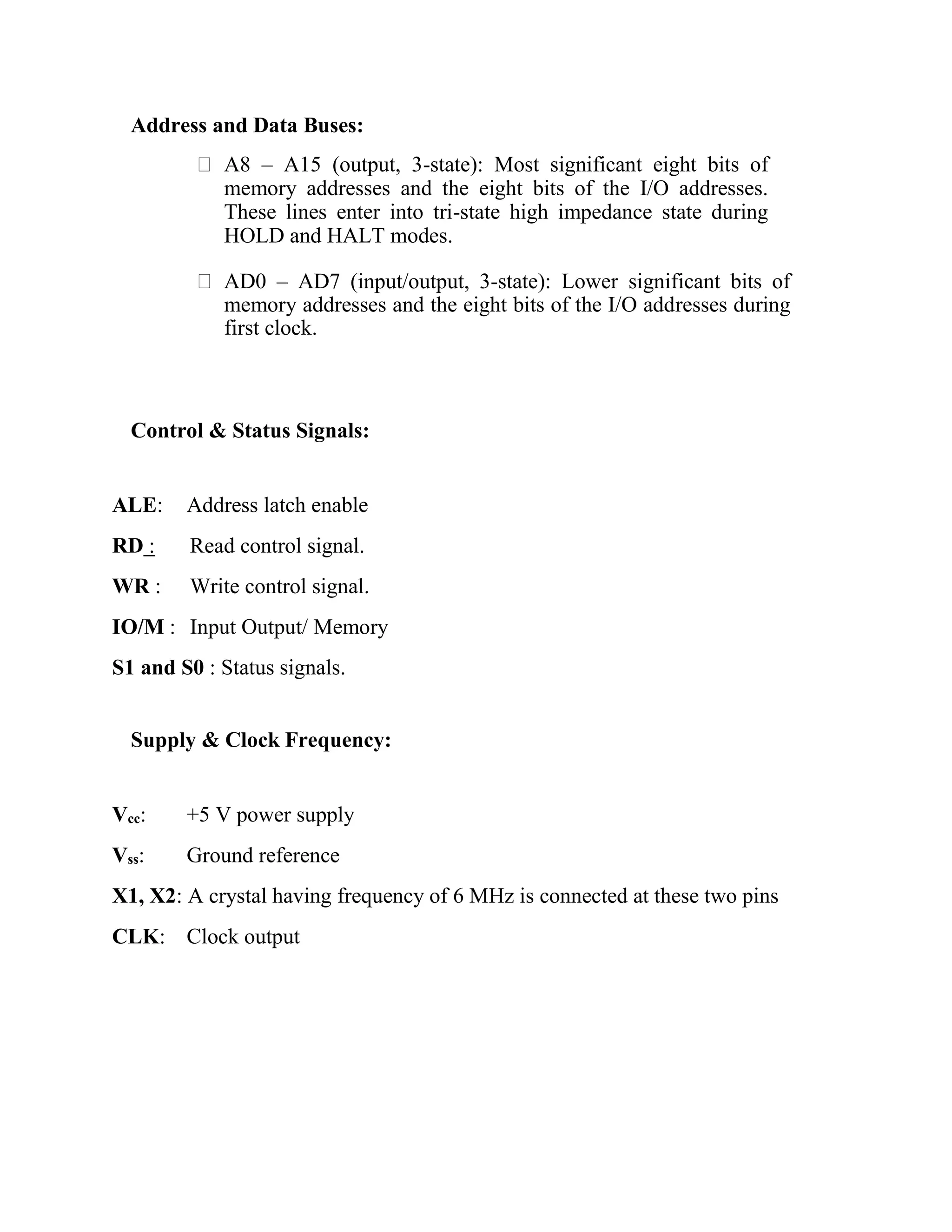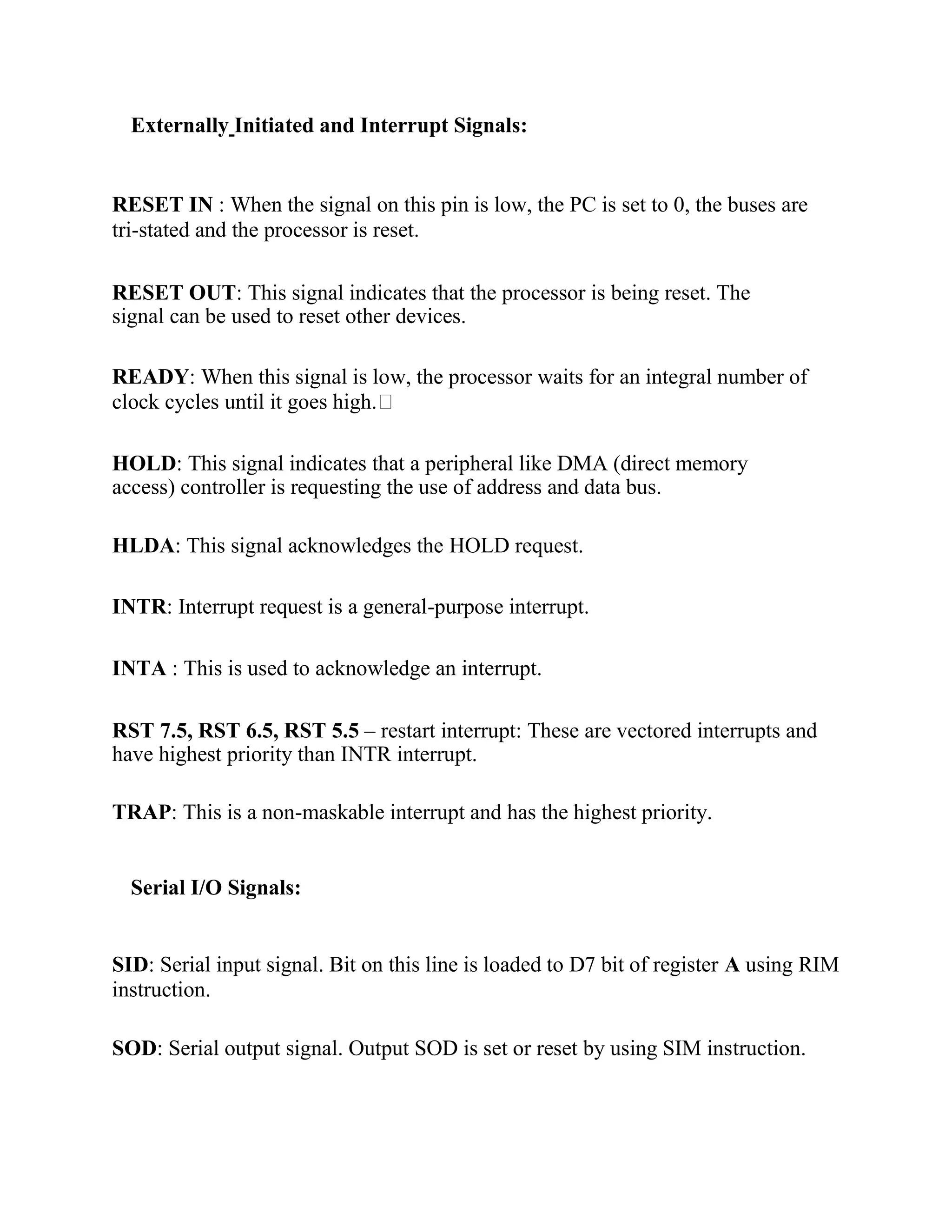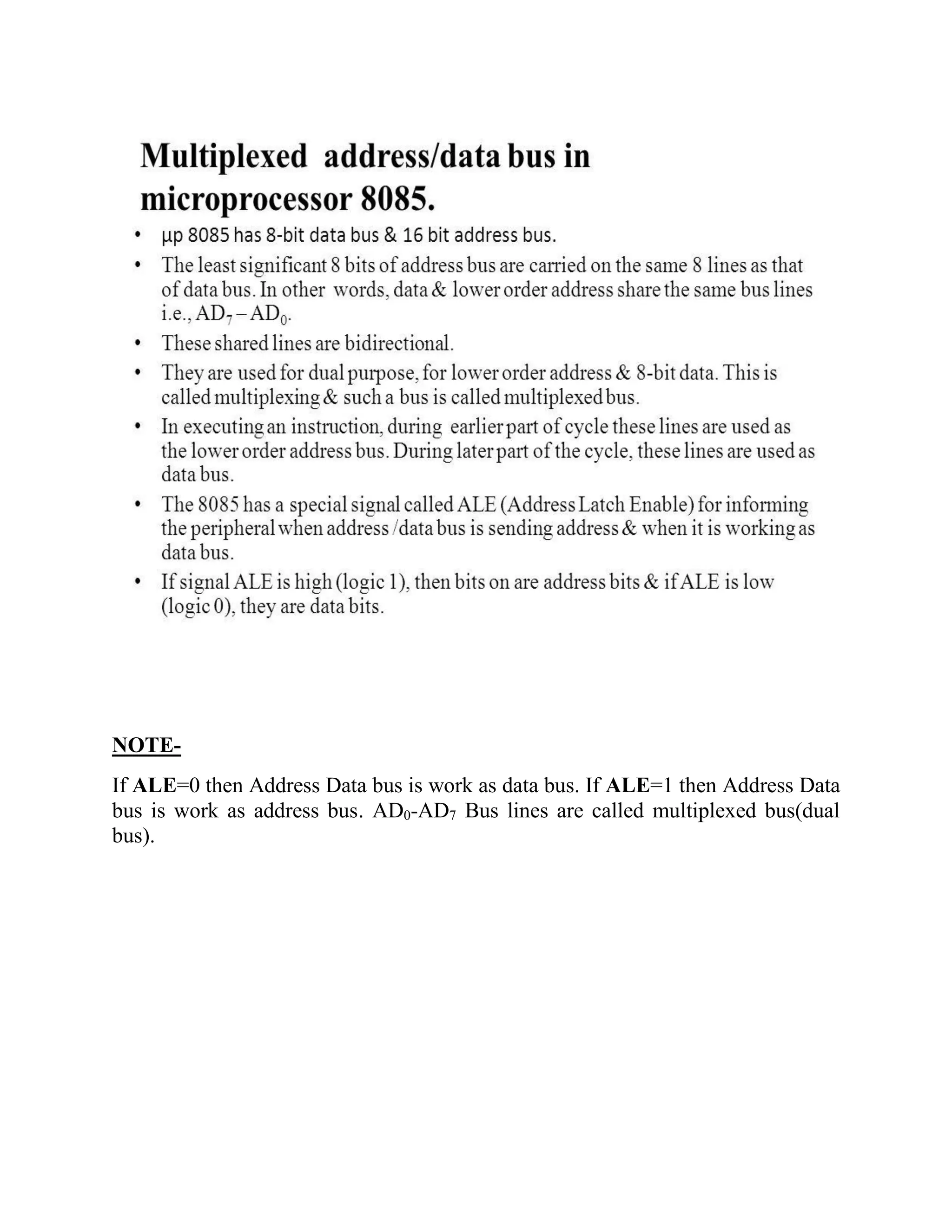The document outlines the history, architecture, and functionality of microprocessors, starting from the invention of transistors and integrated circuits leading to Intel's development of the first microprocessor, the Intel 4004. It describes key components of the 8085 microprocessor, including its ALU, registers, address and data busses, and the various types of microprocessors based on data bus size and application. Additionally, it provides an overview of the operational and functional characteristics of the 8085 microprocessor along with its pin descriptions and control signals.
